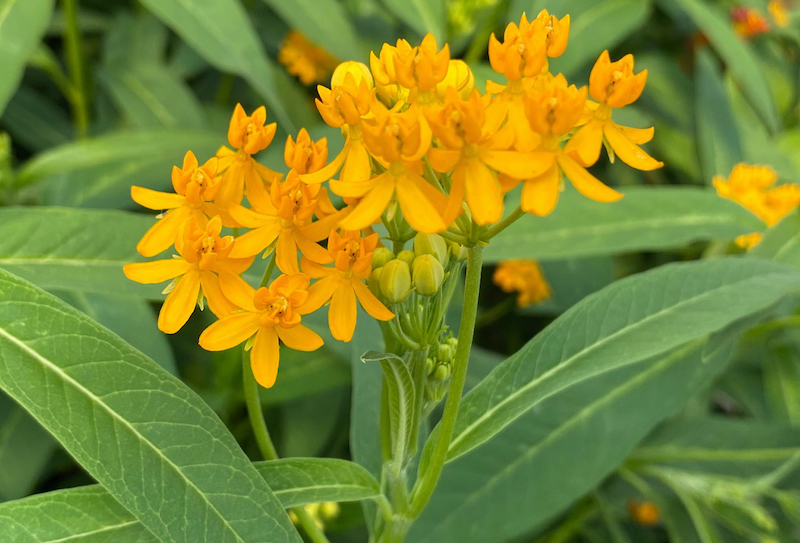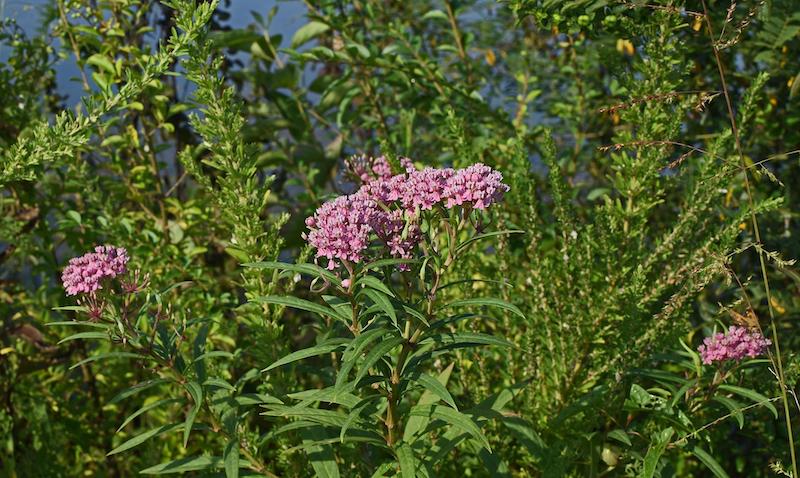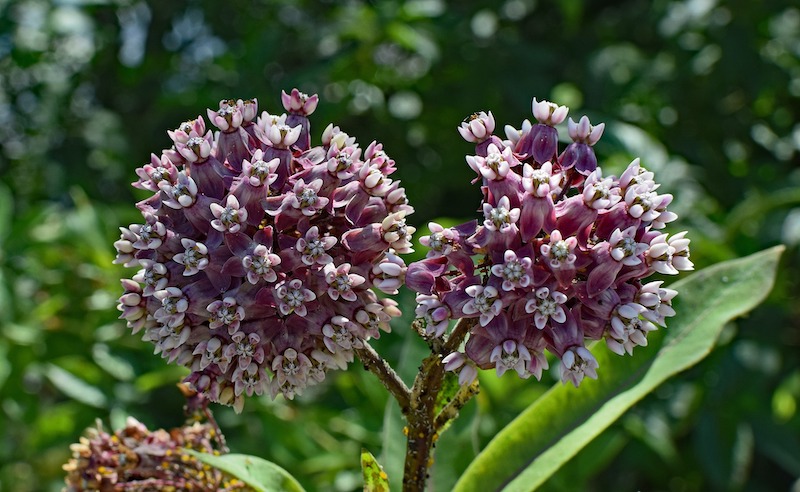Milkweed is a peculiar name for a charming plant. This upright, medium-sized, fast-growing plant will reach about 3 to 4 feet tall and boasts lovely flowers blooming in clusters. The flowers can be pure white, lavender, or a range of orange, reds, and yellows, depending on the variety. There are two types of Milkweed: native and tropical. Native hails from North America and is an herbaceous perennial that dies back in cold weather. Tropical Milkweed retains live growth year-round in warm climates.
Milkweed is a stunner, and it also welcomes butterflies to a yard. Most varieties grow as a perennial in USDA zones 3 through 9. Taking care of Milkweed is very easy as these plants are low maintenance.

Planting Milkweed
The ideal spot for Milkweed will receive full sun. This plant needs at least 6 hours of sunlight per day to thrive. Soil should be dry to medium and allow water to drain easily. Rich, slightly acidic soil will support rapid growth, although this plant can do well in low-quality, rocky soil. Milkweed will accept whatever level of care it receives, but it can still do very well when essentially ignored. This plant will self-seed and can overtake an area if allowed to do so.

Watering Milkweed
Water Milkweed when the top several inches of soil are dry. Established plants can go for more extended periods between watering, but new plants will need water more often—deeply water to saturate the roots and promote a robust root system. Water the ground around the base of the plant and avoid getting the foliage wet to reduce the risk of mold and fungus. Well-draining soil is necessary because Milkweed does not like to be soggy. A thick layer of organic mulch will keep the ground damp, so the plant will not need water as often.
Fertilizing Milkweed
Milkweed is not fussy or needy and can do very well without fertilizer, but if you want your plants to thrive and look their absolute best, increase their nutritional intake. While Milkweed can grow in poor quality soil, rich soil will deliver better plants. Plant in fertile soil and top-dress with organic mulch or compost each spring to support healthy growth. A dose of balanced, water-soluble fertilizer in the spring is not mandatory but can get the plant off to a strong start.
Pruning Milkweed
Deadhead or remove spent flowers to keep the plant looking tidy. The flowers give way to seed pods near the end of the growing season, and if left, the plant will self-seed and easily take over the immediate and surrounding area. Many gardeners remove the flowers as soon as they start to fade to prevent the plant from self-seeding. Trim the plant back to a few inches in the fall, especially in cold climates, to avoid nesting butterfly colonies from attempting to overwinter in the plant when they should be migrating. Milkweed is a herbaceous perennial, and new growth will emerge in the spring.

Caring For Milkweed in Pots
Milkweed is not a common choice for a container, but that doesn’t mean it isn’t an excellent potted plant. Container-grown plants will need more frequent watering, but otherwise, the care needs are the same. Milkweed is a perennial, and the container will need to be moved to a sheltered place during the winter.
Winter Care for Milkweed
Winter care for Milkweed is very basic. Trim the plant back to a few inches in height during the fall. Native Milkweed is an herbaceous perennial, and the growth will die back after the first frost. It is best to remove the growth of tropical Milkweed, so it is not a welcoming environment to butterflies. These plants are favored by butterflies, particularly Monarch butterflies, and growth should be trimmed back to reduce the risk of parasites that are dangerous to butterflies and discourage butterflies from staying and overwintering in the dead growth.
Common Care Questions About Milkweed
Is Milkweed Edible?
From our research we found conflicting information. Milkweed can be edible or highly toxic, and the window for error is very small. Parts of Asclepias incarnata (Swamp Milkweed) are edible, but ONLY when they've been cooked first and only in very small quantities (flower buds that have not yet opened, young shoots, and seed pods.) In large quantities, it can be toxic. Flowers are sometimes boiled down to make sugar syrup.
Is Milkweed Invasive?
There are not any species of milkweed (and there are many) that are invasive or considered to be a noxious weed.
Is Milkweed An Annual Or Perennial?
Milkweed is an herbaceous, native to North America perennial.
Why Are The Leaves On Milkweed Turning Yellow, Brown, and/or Black?
Yellowed leaves on milkweed may be due to under or over-watering (resulting in damaged roots unable to absorb nutrients or water) or by a nutritional deficiency in the soil, most specifically iron. Soil should drain well, making sure the roots are not sitting in water or soggy soil. An iron deficit may be corrected by adding chelated iron powder or bone meal to the soil. Brown or blackened leaves may be evidence of a leaf fungus or sooty mold, respectively.
What Is The Growth Rate Of Milkweed?
Swamp Milkweed is a long-lived, but slow-growing, herbaceous perennial. Growth is less than or up to 12 inches a year.
Is Milkweed Drought Tolerant?
While milkweed prefers, and does best in, soil that drains well but is consistently moist, thanks to a large taproot, once it's established it is extremely heat and drought tolerant.
Have a question about Milkweed? Fill out the form below and we will try and get back to your question as soon as possible. We may even feature your question in this article to help other gardeners!
 |
Author Alison Cotsonas - Published 08-07-2022 |
